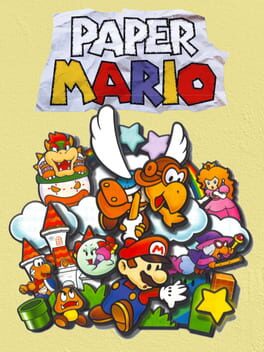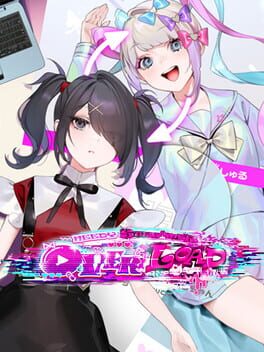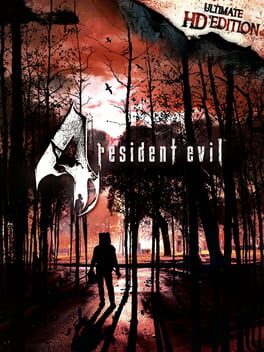MicahGonzalez
Bio
I love JRPGs and action games!
I also use Glitchwave to rate games: https://glitchwave.com/user/MicahGonzalez/
I love JRPGs and action games!
I also use Glitchwave to rate games: https://glitchwave.com/user/MicahGonzalez/
Badges

GOTY '23
Participated in the 2023 Game of the Year Event

2 Years of Service
Being part of the Backloggd community for 2 years

GOTY '22
Participated in the 2022 Game of the Year Event

Gamer
Played 250+ games

Best Friends
Become mutual friends with at least 3 others

Noticed
Gained 3+ followers

Organized
Created a list folder with 5+ lists

Listed
Created 10+ public lists

N00b
Played 100+ games

GOTY '21
Participated in the 2021 Game of the Year Event
Favorite Games
306
Total Games Played
005
Played in 2024
138
Games Backloggd
Recently Played See More
Recently Reviewed See More
The following review is an excerpt from my piece on both Resident Evil 4s. This excerpt covers my full thoughts on the original game.
When I started Resident Evil 4 (2005), I noticed the controls were weird. Tilting the joystick forward moves Leon forward, and tilting it left and right turns him from side to side. The player can make him do a quick turn by pushing the joystick back while pressing X. (on a PS5 controller). The player has to hold down the left bumper to pull out Leon’s knife and then use the right trigger to swing it. It is not possible to move while aiming a weapon. The controls are clunky. But this control scheme works remarkably well for an action game with roots in survival horror. Enemy encounters are always tense because it is not easy to get away from them. This puts pressure on the player to make decisions and make them quickly. “How much ammo do I have left for each gun? What kind of weapon do I want to use? Should I try to kill this enemy or run past it to conserve ammo? Do I want to heal now and get some health back or wait until I find a red herb and heal fully?” These are all questions I have to ask myself while trying to land shots on enemies, and it keeps the gameplay constantly engaging. Even though Resident Evil 4 (2005) is the game that took the series away from its survival horror roots, the clunky controls help maintain the previous games’ tension in an action context.
The level design is varied and supports the controls' playstyle. The game has three main areas, the village, the castle, and the island. They all have their own unique set pieces, puzzles, and enemies. The village eases the player into the game as they learn the controls. The enemies are relatively simple. Most of them are plagas-infected villagers. Eventually, Leon will encounter chainsaw-wielding enemies that can kill him with a single attack. Some enemies carry throwing axes or dynamite sticks, but it is nothing the player cannot handle with a bit of planning and perseverance. The castle adds cultists with new weapons, plagas-infected dogs, suits of armor, and wolverine-like beasts that can slice the player in half if they aren’t killed using the weak points on their back. This area is filled with puzzles that use both Leon and Ashley, encouraging experimentation and exploration.
The game’s final area, the island, houses the game’s most action-packed moments. It feels like a warzone. The enemies are much more challenging now, and some have guns. The player has to duel Jack Krauser, another highly trained soldier, to the death. It also is home to an underground lab filled with Regeneradores, the only enemy in the game that legitimately scares me. The whole level builds to one final interaction with Lord Saddler, the game’s main antagonist, and the final test of the player’s skill. The game remains fresh and exciting to play throughout all three of these areas. There are no dull moments in Resident Evil 4 (2005). It’s filled with meticulously crafted level design and has a campaign that could only be rivaled by Metal Gear Solid 3: Snake Eater, another masterpiece from that era.
Resident Evil 4's gameplay is at its best when fighting bosses. The tension felt when fighting regular enemies is not even comparable to the bosses. The bosses test the player’s mastery of the game’s combat. Leon is just one guy with a few guns, and the bosses are giant monsters of bioterrorism. The bosses require the player to get aggressive even though they seem outmatched. Players must land shots on the bosses, often at specific weak points, while dodging melee and projectile attacks, manipulating the environment to their advantage, and managing resources. Every boss is well-tuned to the game’s combat, and they are all thrillingly fun to fight (except for U-3, that boss sucks).
While Resident Evil 4's gameplay is just about perfect, the story is a little dated. Most of the characters are paper-thin. They have a pretty standard representation of their archetypes. Ashley is a scared and sometimes irrational young woman who acts like a spoiled teenager, fitting for the President’s daughter. Luis is a side-kick Leon can never truly trust, and he’s “great with the ladies” (In 2005, this just meant he would make uncalled-for comments about women’s bodies, apparently) Ada is a femme-fatale foil to Leon. She’s intelligent and charming and can easily manipulate Leon despite her betrayal of him in Resident Evil 2. The game’s villains are also one-note. Lord Sadler is the mastermind behind the organization, a zealot cult leader who controls just about everything. Ramón Salazar is the clear standout; he’s short, has a silly hat, and antagonizes “Mr. Kennedy” throughout the castle. Bitores Méndez is just… sort of there?
The plot itself is relatively simple. Leon Kennedy, a survivor of the Raccoon City outbreak from Resident Evil 2, now works for the feds and needs to save President Graham’s daughter, Ashley, from a cult in Spain. There is a bit more to it that ties the game into Resident Evil’s greater lore, but most of it is not explored in the game’s original release. What Resident Evil 4's plot lacks in complexity, it more than makes up for in charm. The game is full of B-movie humor, witty one-liners, and over-the-top scenes. So while I would not nominate the game for “best writing.” It more than gets the job done; the story presentation fits the game perfectly.
After rolling the credits on Resident Evil 4, I was thoroughly impressed. Despite being an eighteen-year-old Nintendo GameCube game, the gameplay had me just as engaged as the modern third-person shooters it inspired, like The Last of Us. I could easily see why it’s regarded as one of the best games of all time, and I think it is easily one of, if not the best, game on the GameCube.
Click here to read the full article on my Substack
When I started Resident Evil 4 (2005), I noticed the controls were weird. Tilting the joystick forward moves Leon forward, and tilting it left and right turns him from side to side. The player can make him do a quick turn by pushing the joystick back while pressing X. (on a PS5 controller). The player has to hold down the left bumper to pull out Leon’s knife and then use the right trigger to swing it. It is not possible to move while aiming a weapon. The controls are clunky. But this control scheme works remarkably well for an action game with roots in survival horror. Enemy encounters are always tense because it is not easy to get away from them. This puts pressure on the player to make decisions and make them quickly. “How much ammo do I have left for each gun? What kind of weapon do I want to use? Should I try to kill this enemy or run past it to conserve ammo? Do I want to heal now and get some health back or wait until I find a red herb and heal fully?” These are all questions I have to ask myself while trying to land shots on enemies, and it keeps the gameplay constantly engaging. Even though Resident Evil 4 (2005) is the game that took the series away from its survival horror roots, the clunky controls help maintain the previous games’ tension in an action context.
The level design is varied and supports the controls' playstyle. The game has three main areas, the village, the castle, and the island. They all have their own unique set pieces, puzzles, and enemies. The village eases the player into the game as they learn the controls. The enemies are relatively simple. Most of them are plagas-infected villagers. Eventually, Leon will encounter chainsaw-wielding enemies that can kill him with a single attack. Some enemies carry throwing axes or dynamite sticks, but it is nothing the player cannot handle with a bit of planning and perseverance. The castle adds cultists with new weapons, plagas-infected dogs, suits of armor, and wolverine-like beasts that can slice the player in half if they aren’t killed using the weak points on their back. This area is filled with puzzles that use both Leon and Ashley, encouraging experimentation and exploration.
The game’s final area, the island, houses the game’s most action-packed moments. It feels like a warzone. The enemies are much more challenging now, and some have guns. The player has to duel Jack Krauser, another highly trained soldier, to the death. It also is home to an underground lab filled with Regeneradores, the only enemy in the game that legitimately scares me. The whole level builds to one final interaction with Lord Saddler, the game’s main antagonist, and the final test of the player’s skill. The game remains fresh and exciting to play throughout all three of these areas. There are no dull moments in Resident Evil 4 (2005). It’s filled with meticulously crafted level design and has a campaign that could only be rivaled by Metal Gear Solid 3: Snake Eater, another masterpiece from that era.
Resident Evil 4's gameplay is at its best when fighting bosses. The tension felt when fighting regular enemies is not even comparable to the bosses. The bosses test the player’s mastery of the game’s combat. Leon is just one guy with a few guns, and the bosses are giant monsters of bioterrorism. The bosses require the player to get aggressive even though they seem outmatched. Players must land shots on the bosses, often at specific weak points, while dodging melee and projectile attacks, manipulating the environment to their advantage, and managing resources. Every boss is well-tuned to the game’s combat, and they are all thrillingly fun to fight (except for U-3, that boss sucks).
While Resident Evil 4's gameplay is just about perfect, the story is a little dated. Most of the characters are paper-thin. They have a pretty standard representation of their archetypes. Ashley is a scared and sometimes irrational young woman who acts like a spoiled teenager, fitting for the President’s daughter. Luis is a side-kick Leon can never truly trust, and he’s “great with the ladies” (In 2005, this just meant he would make uncalled-for comments about women’s bodies, apparently) Ada is a femme-fatale foil to Leon. She’s intelligent and charming and can easily manipulate Leon despite her betrayal of him in Resident Evil 2. The game’s villains are also one-note. Lord Sadler is the mastermind behind the organization, a zealot cult leader who controls just about everything. Ramón Salazar is the clear standout; he’s short, has a silly hat, and antagonizes “Mr. Kennedy” throughout the castle. Bitores Méndez is just… sort of there?
The plot itself is relatively simple. Leon Kennedy, a survivor of the Raccoon City outbreak from Resident Evil 2, now works for the feds and needs to save President Graham’s daughter, Ashley, from a cult in Spain. There is a bit more to it that ties the game into Resident Evil’s greater lore, but most of it is not explored in the game’s original release. What Resident Evil 4's plot lacks in complexity, it more than makes up for in charm. The game is full of B-movie humor, witty one-liners, and over-the-top scenes. So while I would not nominate the game for “best writing.” It more than gets the job done; the story presentation fits the game perfectly.
After rolling the credits on Resident Evil 4, I was thoroughly impressed. Despite being an eighteen-year-old Nintendo GameCube game, the gameplay had me just as engaged as the modern third-person shooters it inspired, like The Last of Us. I could easily see why it’s regarded as one of the best games of all time, and I think it is easily one of, if not the best, game on the GameCube.
Click here to read the full article on my Substack
The following review is an excerpt from my piece on both Resident Evil 4s. This excerpt covers my full thoughts on the 2023 remake.
This year’s remake of Resident Evil 4 is, by all means, a brand new game. It retains most of the original game’s set pieces, the same story scenario and characters, similar level design, and the over-the-shoulder third-person camera. However, nearly every one of those elements has been changed in some substantial way. Set pieces are often expanded or explored from different angles. While the basic story structure is the same, the story beats are in a new order, characters who previously did not share screen time interact, and the characterization and plot details are updated the be more intricate and interesting. While the game is still a third-person shooter, the combat has been altered so drastically that the clunky but tense survival horror action of the 2005 version has been entirely stripped away. Because of these changes, I think of Resident Evil 4 (2023) as less of a remake and more of a remix.
I would compare the more traditional 1-to-1 remakes of video games to covers of songs. A different artist or group of artists works to recreate someone else’s work. The voices singing may be different, and the instrumentation might change, but the song that the group performs is the same. Most video game remakes are the same way. They’re made by different teams at different points in time; those aspects are apparent. However, the game’s identity is ultimately bound to that original game. Resident Evil 4 (2023) is a remix, not a cover. The Capcom of 2023 is sampling the work of Shinji Mikami’s team in 2005, but like an artist remixes a song, these samples are just building blocks for a new piece of music. The song’s structure changes as the remixer adds in their beats and records new instrumentals to add to the song. The identity of the song, or in this case, the game, fundamentally changes.
In 2023, these changes are welcome. As much fun as the original Resident Evil 4's combat is, it would feel notably out of place in the gaming landscape in 2023. Games like Gears of War, Dead Space, The Last of Us, and even Resident Evil 4's follow-ups have built upon the third-person shooter groundwork it laid. These modernizations have made their way into Resident Evil 4 (2023). Leon now has standard analog movement, he can move and shoot simultaneously, and his knife is bound to a single button. The game feels great; it’s super fluid and easy to play. However, this is supposed to be a horror game. Part of what made the original Resident Evil 4 so fun was that it wasn’t easy to play, causing constant tension that elevated the action-horror experience. Despite these changes, Resident Evil 4 (2023) can maintain this level of tension by making another fundamental change. The enemies in this game are faster, they’re smarter, they’re stronger, they’re more aggressive, and there are more of them. So while the tension causing clunkiness of the game’s 2005 release is missing, it has been replaced by the reworked enemy AI paired with the resource management left virtually untouched from the original 2005 release.
Resident Evil 4’s (2023) level design mostly takes the set pieces of the original game but alters them to fit with the new enemy AI. Some encounters are almost identical; some are reworked, some are expanded, and some have been removed and replaced by new ones. My two favorite level changes are the village’s lake and the castle’s mine. The lake was simply a battleground for a boss fight in the original game. Now it’s a fully explorable area with multiple puzzles, enemy encounters, and even optional sites to explore and find new equipment. The mine has been completely expanded with a reworked minecart section that adds a fast-paced shooting challenge. Luis now accompanies Leon in this level, which is a nice change of pace as he is much more helpful than Ashley is in combat.
Speaking of Ashley, Resident Evil 4’s characters have all undergone quite a bit of change to fit more in line with the remake’s tone and address some criticisms of the original game. Leon is more or less the same, he’s still dropping cheesy one-liners, but it’s clear that the events of Resident Evil 2’s Raccoon City outbreak have taken a toll on his mental state. Ashley is the character I believe underwent the most positive changes. While I enjoyed Ashley’s presence in Resident Evil 4 (2005), she did seem like a somewhat underdeveloped damsel in distress. Ashley is college-aged but acts more like a prim teenager than a young woman, all while having the voice of Sandy Cheeks from Spongebob Squarepants. Despite these criticisms, I enjoyed Ashley’s presence and escort missions in Resident Evil 4 (2005) as they kept the game from feeling too lonely. Resident Evil 4 (2023) emphasized everything I liked about Ashley. A friendship between her and Leon was present in the original game, but the remake has multiple instances where they act as a team. After Leon’s boss fights with Bitores Méndez in the burning building, Ashley ensures Leon makes it out unharmed. When Leon fights plagas-infected knights in the castle, Ashley throws lanterns at them from the balcony, allowing Leon to land a clean shot. Leon is still there to rescue her, but Ashley takes more agency toward her own survival in the remake. She cares about Leon past the fact that he is her ticket out of captivity.
Other supporting characters have been changed as well. Luis has a more supporting role in the story and is present for more of the game's runtime. I mentioned this earlier, but there is a chapter where he acts as your partner almost the entire time. Ada Wong is mostly the same but slightly more subdued than her appearance in Resident Evil 4 (2005). She places an almost identical role in the story, and it’s clear Capcom is probably waiting to expand on her character until the Separate Ways scenario is remade as DLC. The villains are mostly the same except for Ramón Salazar, who took a notable downgrade. Why did Capcom get rid of his funny hat? It was the best part of his design.
Along with the villains’ characterization, their boss fights have also changed. Most of them, including Ramón Salazar, have been completely reworked. For example, in Resident Evil 4 (2005), Leon fought Salazar from an elevated platform surrounded by a lower floor of resources and enemies. The player would have to land shots on Salzar’s eyes to open up his weak point and deal substantial damage while dodging Salazar’s attacks. This fight was one of my favorites in the original game and was made tense due to how limited the space a player could safely inhabit was. Resident Evil 4 (2023) completely upends this boss fight. Leon now encounters Salazar in a hall of staircases to fit the new run-and-gun control scheme. The player must run up and down these staircases avoiding being swallowed whole by Salazar, getting shots in on him, and maintaining their health and ammo. It plays completely differently. While Salzar is the boss that underwent the most changes, most other bosses underwent similar changes, completely changing their identity and how the player needs to adapt to encounters with them.
While Resident Evil 4’s (2023) gameplay loop, characterization, and boss fights have all been substantially changed from the original game, the story, at least from a structural perspective, is essentially the same. A few events happened out of order, but other than that, I did not notice any significant differences. The biggest changes come in the number of details and tone of the story’s presentation. Resident Evil 4 (2023) is still silly, but as a AAA game released in 2023, it has to exist in the hyper-cinematic gaming landscape dominated by Sony’s similar third-person shooters. The game feels darker. Characters make slightly fewer jokes. There is a lot more lore to be found in documents sitting around to more strongly connect it to the other Resident Evil games, but at the end of the day, it is still Resident Evil 4. I can see these changes irritating purists, but for the kind of remake Capcom was going for, I think most of the story and tone changes work well.
Overall, I loved Resident Evil 4 (2023). It’s one of the best action games I’ve ever played. However, my enjoyment of it did not come from the fact that it’s a remake of Resident Evil 4 (2005). I enjoyed it because it was just a great game. This game did not replace my enjoyment of the original game for one moment. Even though I enjoyed it about the same as the original game, I wouldn’t call it Resident Evil 4, but better; I’d call it Resident Evil 4 but different.
Click here to read the full article on my Substack
This year’s remake of Resident Evil 4 is, by all means, a brand new game. It retains most of the original game’s set pieces, the same story scenario and characters, similar level design, and the over-the-shoulder third-person camera. However, nearly every one of those elements has been changed in some substantial way. Set pieces are often expanded or explored from different angles. While the basic story structure is the same, the story beats are in a new order, characters who previously did not share screen time interact, and the characterization and plot details are updated the be more intricate and interesting. While the game is still a third-person shooter, the combat has been altered so drastically that the clunky but tense survival horror action of the 2005 version has been entirely stripped away. Because of these changes, I think of Resident Evil 4 (2023) as less of a remake and more of a remix.
I would compare the more traditional 1-to-1 remakes of video games to covers of songs. A different artist or group of artists works to recreate someone else’s work. The voices singing may be different, and the instrumentation might change, but the song that the group performs is the same. Most video game remakes are the same way. They’re made by different teams at different points in time; those aspects are apparent. However, the game’s identity is ultimately bound to that original game. Resident Evil 4 (2023) is a remix, not a cover. The Capcom of 2023 is sampling the work of Shinji Mikami’s team in 2005, but like an artist remixes a song, these samples are just building blocks for a new piece of music. The song’s structure changes as the remixer adds in their beats and records new instrumentals to add to the song. The identity of the song, or in this case, the game, fundamentally changes.
In 2023, these changes are welcome. As much fun as the original Resident Evil 4's combat is, it would feel notably out of place in the gaming landscape in 2023. Games like Gears of War, Dead Space, The Last of Us, and even Resident Evil 4's follow-ups have built upon the third-person shooter groundwork it laid. These modernizations have made their way into Resident Evil 4 (2023). Leon now has standard analog movement, he can move and shoot simultaneously, and his knife is bound to a single button. The game feels great; it’s super fluid and easy to play. However, this is supposed to be a horror game. Part of what made the original Resident Evil 4 so fun was that it wasn’t easy to play, causing constant tension that elevated the action-horror experience. Despite these changes, Resident Evil 4 (2023) can maintain this level of tension by making another fundamental change. The enemies in this game are faster, they’re smarter, they’re stronger, they’re more aggressive, and there are more of them. So while the tension causing clunkiness of the game’s 2005 release is missing, it has been replaced by the reworked enemy AI paired with the resource management left virtually untouched from the original 2005 release.
Resident Evil 4’s (2023) level design mostly takes the set pieces of the original game but alters them to fit with the new enemy AI. Some encounters are almost identical; some are reworked, some are expanded, and some have been removed and replaced by new ones. My two favorite level changes are the village’s lake and the castle’s mine. The lake was simply a battleground for a boss fight in the original game. Now it’s a fully explorable area with multiple puzzles, enemy encounters, and even optional sites to explore and find new equipment. The mine has been completely expanded with a reworked minecart section that adds a fast-paced shooting challenge. Luis now accompanies Leon in this level, which is a nice change of pace as he is much more helpful than Ashley is in combat.
Speaking of Ashley, Resident Evil 4’s characters have all undergone quite a bit of change to fit more in line with the remake’s tone and address some criticisms of the original game. Leon is more or less the same, he’s still dropping cheesy one-liners, but it’s clear that the events of Resident Evil 2’s Raccoon City outbreak have taken a toll on his mental state. Ashley is the character I believe underwent the most positive changes. While I enjoyed Ashley’s presence in Resident Evil 4 (2005), she did seem like a somewhat underdeveloped damsel in distress. Ashley is college-aged but acts more like a prim teenager than a young woman, all while having the voice of Sandy Cheeks from Spongebob Squarepants. Despite these criticisms, I enjoyed Ashley’s presence and escort missions in Resident Evil 4 (2005) as they kept the game from feeling too lonely. Resident Evil 4 (2023) emphasized everything I liked about Ashley. A friendship between her and Leon was present in the original game, but the remake has multiple instances where they act as a team. After Leon’s boss fights with Bitores Méndez in the burning building, Ashley ensures Leon makes it out unharmed. When Leon fights plagas-infected knights in the castle, Ashley throws lanterns at them from the balcony, allowing Leon to land a clean shot. Leon is still there to rescue her, but Ashley takes more agency toward her own survival in the remake. She cares about Leon past the fact that he is her ticket out of captivity.
Other supporting characters have been changed as well. Luis has a more supporting role in the story and is present for more of the game's runtime. I mentioned this earlier, but there is a chapter where he acts as your partner almost the entire time. Ada Wong is mostly the same but slightly more subdued than her appearance in Resident Evil 4 (2005). She places an almost identical role in the story, and it’s clear Capcom is probably waiting to expand on her character until the Separate Ways scenario is remade as DLC. The villains are mostly the same except for Ramón Salazar, who took a notable downgrade. Why did Capcom get rid of his funny hat? It was the best part of his design.
Along with the villains’ characterization, their boss fights have also changed. Most of them, including Ramón Salazar, have been completely reworked. For example, in Resident Evil 4 (2005), Leon fought Salazar from an elevated platform surrounded by a lower floor of resources and enemies. The player would have to land shots on Salzar’s eyes to open up his weak point and deal substantial damage while dodging Salazar’s attacks. This fight was one of my favorites in the original game and was made tense due to how limited the space a player could safely inhabit was. Resident Evil 4 (2023) completely upends this boss fight. Leon now encounters Salazar in a hall of staircases to fit the new run-and-gun control scheme. The player must run up and down these staircases avoiding being swallowed whole by Salazar, getting shots in on him, and maintaining their health and ammo. It plays completely differently. While Salzar is the boss that underwent the most changes, most other bosses underwent similar changes, completely changing their identity and how the player needs to adapt to encounters with them.
While Resident Evil 4’s (2023) gameplay loop, characterization, and boss fights have all been substantially changed from the original game, the story, at least from a structural perspective, is essentially the same. A few events happened out of order, but other than that, I did not notice any significant differences. The biggest changes come in the number of details and tone of the story’s presentation. Resident Evil 4 (2023) is still silly, but as a AAA game released in 2023, it has to exist in the hyper-cinematic gaming landscape dominated by Sony’s similar third-person shooters. The game feels darker. Characters make slightly fewer jokes. There is a lot more lore to be found in documents sitting around to more strongly connect it to the other Resident Evil games, but at the end of the day, it is still Resident Evil 4. I can see these changes irritating purists, but for the kind of remake Capcom was going for, I think most of the story and tone changes work well.
Overall, I loved Resident Evil 4 (2023). It’s one of the best action games I’ve ever played. However, my enjoyment of it did not come from the fact that it’s a remake of Resident Evil 4 (2005). I enjoyed it because it was just a great game. This game did not replace my enjoyment of the original game for one moment. Even though I enjoyed it about the same as the original game, I wouldn’t call it Resident Evil 4, but better; I’d call it Resident Evil 4 but different.
Click here to read the full article on my Substack









